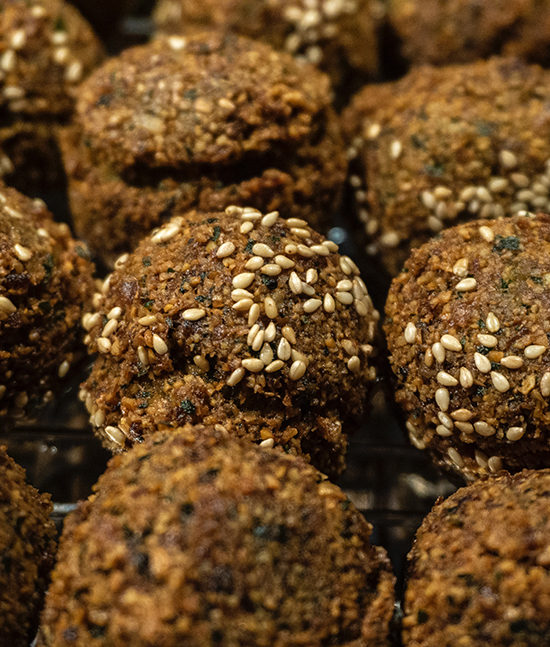

To nurture all our senses is to nurture our life. The Ayurvedic path to a healthy life is one of moderation which lays emphasis on creating routines based on the requirements of our body and mind to enhance our wellbeing

सत्त्वमात्मा शरीरं च त्रयमेतत्त्रिदण्डवत्|
लोकस्तिष्ठति संयोगात्तत्र सर्वं प्रतिष्ठितम्||
The tripod of life are Satva (mind), Atma (soul) and Shareera (body). The world is sustained by their combination. They constitute the basis for everything.
Ayurveda is the traditional system of medicine of the Indian subcontinent. Ayur translates into ‘life’ and Veda translates into ‘knowledge’, so Ayurveda literally translates into ‘the knowledge of life’. The first written record of Ayurveda comes from the Atharva Veda (the last of the four Vedas, written between 1200 to 1000 BCE).
When the British government in India was planning to set up the first medical college in India, in the 1830s, there was an intense debate about which system of medicine to follow – traditional Indian or Western medicine. The Western medicine system triumphed and all the medical colleges that have been set up in India since then have followed the same. However, the 5000-year-old teachings of Ayurveda continue to flourish and are relevant to the inhabitants of the subcontinent even today. This is because Ayurveda doesn’t just discuss diseases and their treatments but has a holistic approach towards the underlying causes of diseases.
There are three main texts on Ayurveda – the Charaka Samhita, the Sushruta Samhita and the Bhela Samhita. Of these three, the Charaka Samhita contains theories on the human body, aetiology, therapeutics, etc., along with theories on matters of everyday relevance such as the importance of diet, hygiene, change of seasons and how it impacts our body and mind, among others.
The Charaka Samhita says that there are three principle pursuits in one’s life – the pursuit of life, pursuit of wealth and pursuit of the afterlife. Of these three, the pursuit of life needs to be prioritised first. And in order to pursue life one must pursue health. The text says, “Leaving everything else, one should take care of the body, for in the absence of body there is the total extinction of all that characterizes embodied beings.” Ayurveda sees longevity as the natural result of harmony between the body, mind and the spirit. When the body is taken care of, the mind feels healthy and the spirit feels fulfilled, and vice versa.
In the human being, according to Charaka Samhita, the five great elements – earth, water, fire, air and ether – assemble together. And each element has a particular function. Similarly, there are three doshas within every human being – Vata, Pitta and Kapha. Each dosha plays a certain function. Vata is in charge of every motion in the body and mind. Pitta handles internal transformation, including digestion. And Kapha stabilizes the being. Usually, one or more of the elements and doshas dominate the body and mind, leading to instability. To live a harmonious life, one must strive to balance the five elements and the three doshas by establishing mindful and healthy habits.

But it is not just what we eat but how we eat that has a significant impact on our wellbeing. In most of our lives today, eating has become a chore. We are constantly distracted by our phones, the TV or even incessant conversations at the dinner table.
In his book, Ayurveda Life, Health and Longevity, Robert E. Svoboda explains, “Ayurvedic preventive medicine is called svasthavrtta, ‘establishing oneself in good habits’, and its salient principle is that one must reject excess in everything. Harmony and health are possible only when everything in life is enjoyed at the proper moment in the proper amount.”
In Charaka Samhita there is a clearly articulated connection between an individual’s health and the six seasons of the subcontinent – Grishma (summer), Varsha (monsoon), Sharad (autumn), Hemanta (pre-winter), Shishir (winter) and Basant (spring). It is believed that our bodies are more prone to falling ill when we transition from one season to another. Depending on the dominant dosha of our body, our age and the season, our routines must also change. For example, during Varsha rtu our body’s digestive fire burns low leading to slow metabolism and low immunity. We are advised to eat Jaggery with Ginger to boost our digestive fire and prevent diseases in the rainy season. However, during winter our body requires a heavier, more warming diet. Here we are advised to eat Jaggery with Sesame seeds since Sesame seeds are oily and heavy and provide warmth during the cold season.
While seasonal routines help align our body and mind with the physical transition of the seasons, daily routine or Dinacharya helps align us with the day and night cycle. Ayurveda advices waking up before sunrise as this is the purest time of the day. Drink a glass of lukewarm water to facilitate elimination before you wash your eyes. Follow this with Gandusha or Oil pulling, an Ayurvedic practice of cleansing the mouth which is now trending globally. Abhyanga or massaging our body is also an important step of a daily routine. This increases circulation, removes wastes from tissues and relaxes our mind all at the same time. The navel should be oiled everyday to facilitate the flow of prana (life force) into the various nadis (channels). One of the most important points to be massaged is the agnishikha – the whorl of hair at the back of the head. This allows for a free flow of consciousness within our mind.
According to Ayurveda, one of the most important tenets for living a healthy life every day is to maintain a good diet. “Verily, the body is the result of food,” says the Charaka Samhita laying emphasis on the importance of a moderate, healthy diet for our physical and mental wellbeing.
It is believed that wholesome food prevents diseases and unwholesome food causes diseases. We are advised to eat food that is opposite in quality with the season or the climate one lives in. This helps balance the three doshas in our body. But it is not just what we eat but how we eat that has a significant impact on our wellbeing. In most of our lives today, eating has become a chore. We are constantly distracted by our phones, the TV or even incessant conversations at the dinner table. Ayurveda says that it is important to be mindful while preparing and consuming food so as to allow our senses to feel, taste and absorb the nutrients of what we are eating. We must feed all the five senses. Look at the appearance of the food before every meal, inhale its aroma, listen to the sounds while the food is being prepared and while eating it, eat with your hands as this allows your skin to sense the texture and the temperature of the food and send cues to your brain; chew properly, and experience gratitude for the food that is to become a part of you.

Abhyanga or massaging our body is also an important step of a daily routine. This increases circulation, removes wastes from tissues and relaxes our mind all at the same time. The navel should be oiled everyday to facilitate the flow of prana (life force) into the various nadis (channels).
In her book Indian Superfoods Rujuta Diwekar emphasises the importance of eating in silence, “Don’t talk, don’t read, don’t surf, just eat. It will actually put you in touch with yourself and then you will hear the voice of your stomach. Your stomach will guide you in eating the right quantities at every meal. It will slow down the pace at which you are consuming. It will make you feel lighter, younger, calmer with every bite.”
Charaka Samhita does not frown upon the consumption of meat or alcohol. In fact, it talks in length about the importance of their consumption for our health, depending on the requirements of our body. For example, goat and rooster meat is considered good for strengthening the body; pork and fish are believed to be aphrodisiacs; and wine is referred to as a ‘nectar’. However, both the consumption of meat and alcohol must be in moderation to prevent them from having a negative impact.
While consuming the correct amount of food in a certain way and at a certain time allows our body to be energised, it is also important to provide rest to our bodies. Getting restful sleep is also one of the main pillars of living a healthy life. Here too, moderation is advised – one should neither sleep less nor more. It is recommended to go to sleep before 10 p.m. at night since this is the Kapha time of the day and our body is naturally tired and ready to unwind. From 10 p.m. to 2 a.m. we enter the Pitta time which is a time of intense activity and it gets difficult to fall asleep. When we sleep well our body and mind naturally heal and rejuvenate, enhancing our overall wellbeing.
Instead of limiting us to any particular routine Ayurveda advices us to recognise the needs of our body and mind and set a seasonal and daily routine accordingly, never over-indulging in any activity. Living a life with Ayurvedic principles means living a life in moderation. This allows us to build harmony between our body, mind and spirit. And when there is harmony within and without, our quality of life is enhanced leading to a longer, more fulfilled life.
I absolutely love your write-ups on Ayurved & Well Being.
It is like everything sentence I read made me revise Dr. Robert’ or Nutrionist Rujuta’ book.